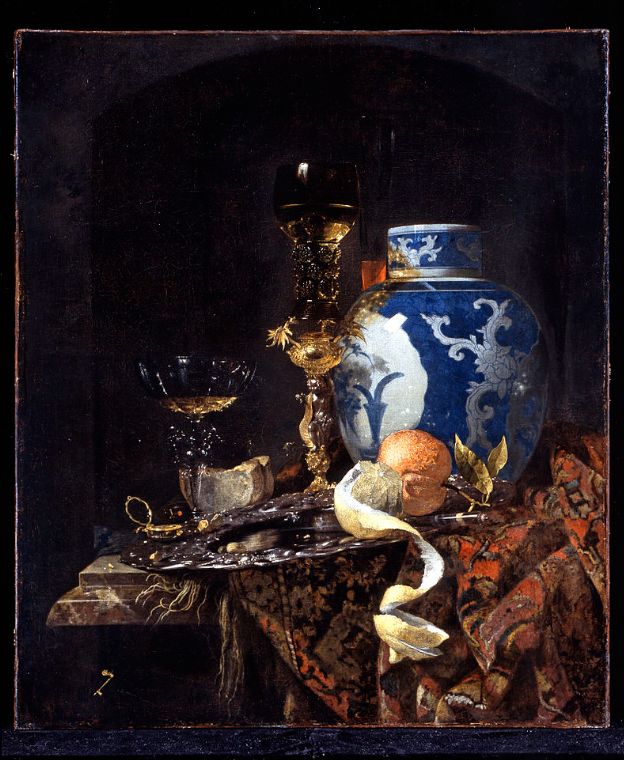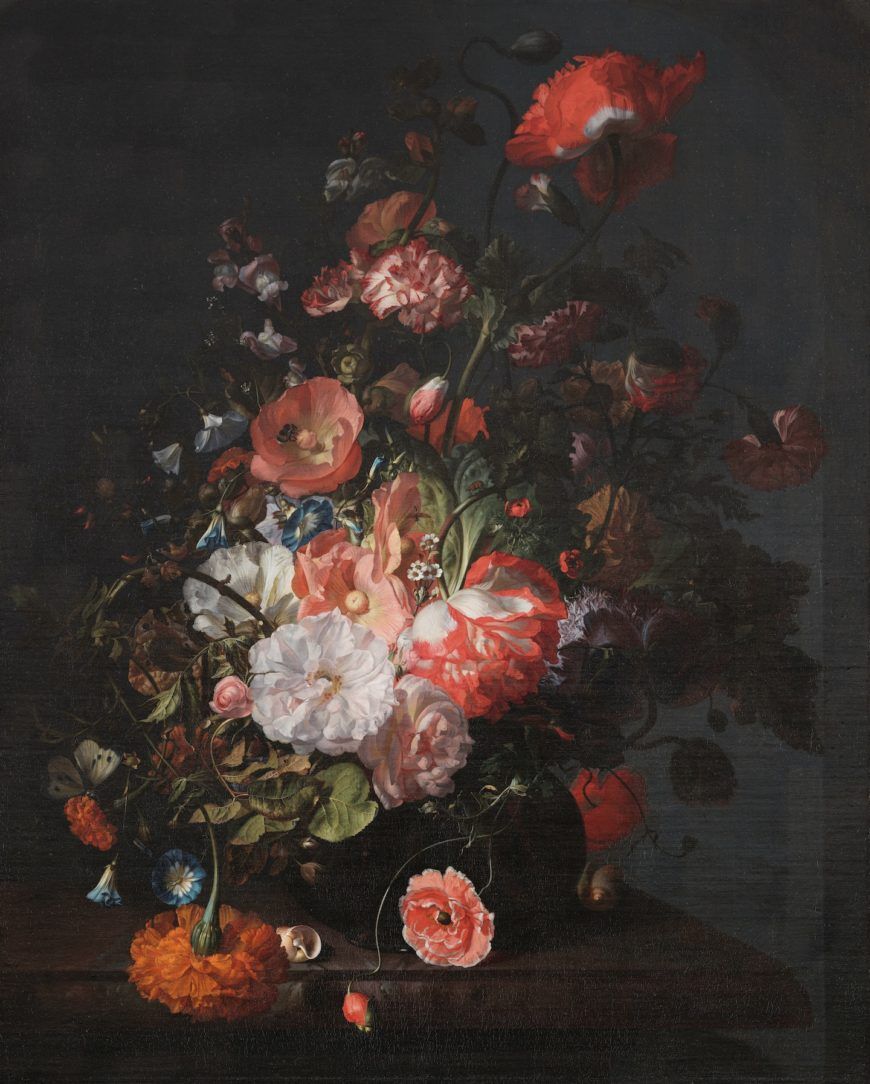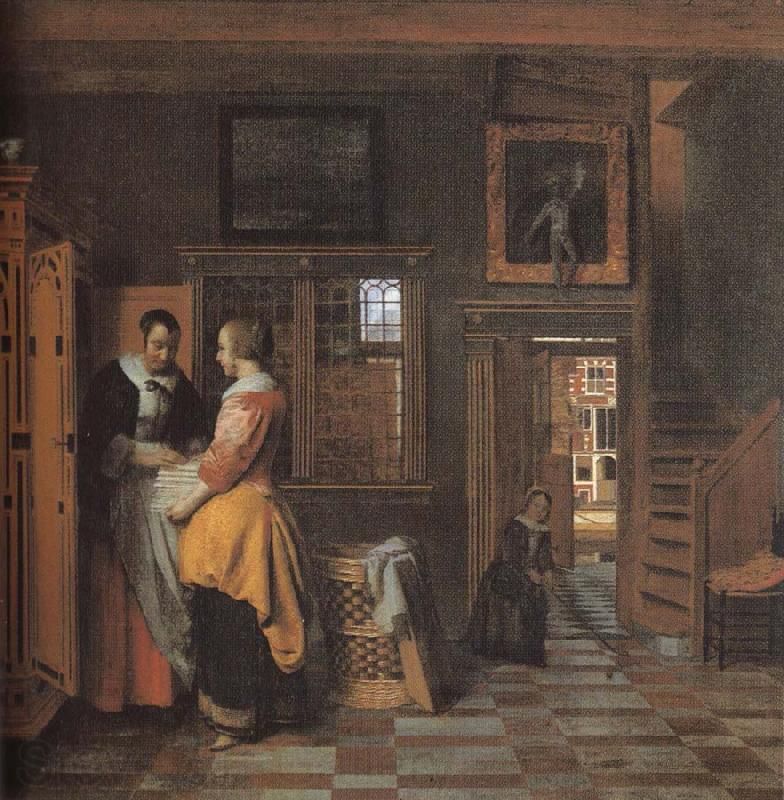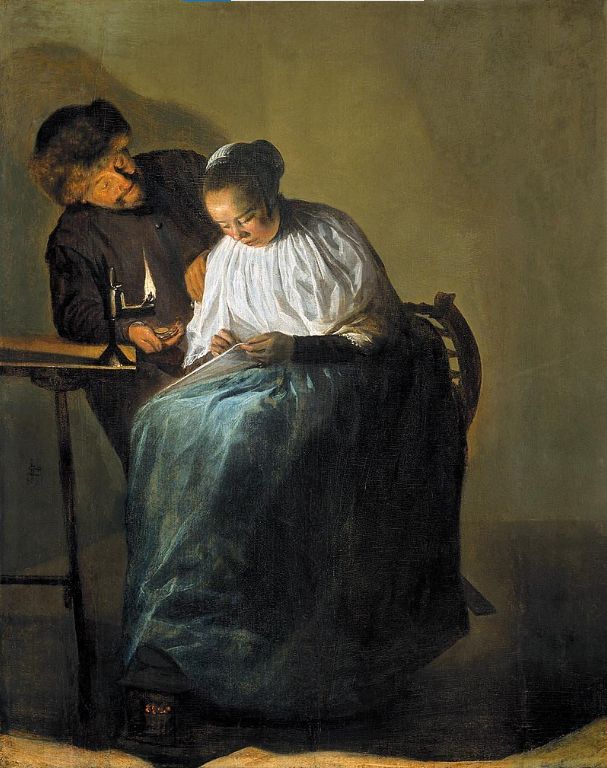The Dutch Golden Age was a pinnacle period for painting, with numerous outstanding artists emerging and creating breathtaking works. Among them, Willem Kalf (1619-1693) was one of the most talented still life painters, known for depicting luxurious objects such as silver wine jugs, Turkish carpets, and Chinese porcelain bowls filled with oranges and lemons. In Northern Europe at the time, oranges and lemons were expensive fruits, symbolizing wealth and status.
Kalf's judgment in composition and illusionistic technique was exceptional, creating a harmonious balance of luxury and tranquility through shape, color, texture, reflection, and transparency. His still lifes not only displayed the opulence of objects but also showcased his precise control over light and detail. Every item was meticulously arranged in the painting, and through the skillful use of light, a natural sense of balance was achieved.

Contemporary to Kalf, another prominent painter was Rachel Ruysch (1664-1750), the first internationally renowned female painter. She was famous for her floral still lifes, which not only displayed diverse flower varieties and rich colors but also conveyed the vitality and natural beauty of flowers through delicate brushstrokes and realistic depiction.

In the Dutch art market, paintings depicting everyday life interiors were as popular as landscape and still life paintings. These genre paintings, typically small in size and with clear detail, reproduced familiar scenes of the world, making them suitable for the middle-class households' living rooms and reflecting the homeowners' views. These paintings not only depicted reality but often conveyed moral messages.
Pieter de Hooch (1629-1688) was a notable artist of this period. His work "The Linen Cupboard" (1663) presents an orderly household scene: polished floors, a maid handing ironed linen to her mistress, and a child quietly playing nearby. De Hooch created a warm and serene atmosphere through the clever use of light and color, demonstrating his keen observation of everyday life and unique insights.

In the realm of genre painting, Gerard ter Borch (1617-1681) created works like "The Gallant Officer," which depicted scenes of temptation, often conveying ambiguous moral messages. For example, skulls symbolized death, and extinguished candles implied the brevity of life. These symbols also appeared in still life paintings, inviting viewers to reflect on the meaning and value of life while appreciating the artwork.

Judith Leyster (1609-1660) was another unique artist whose work "The Proposition" (1631) depicts a woman rejecting a suitor. This portrayal of female independence and autonomy was quite rare in artworks of that time. Leyster's paintings not only demonstrated her superb painting skills but also conveyed deep emotions and social significance through the subtle depiction of characters' expressions and actions.

During this era, many painters incorporated contemporary scientific interests, such as botany and zoology, into their works. However, pure visual pleasure remained the primary focus for artists when depicting the rich and varied natural world. Artists like Kalf and Ruysch achieved stunning works through their meticulous attention to detail.
These various types of still lifes and genre paintings were immediately associated with different symbols, providing viewers with opportunities for indulgence or contemplation of sin. This also raised issues of Christian free will, which were not resolved within the Calvinist doctrines of predestination. In these artworks, reality and idealism intertwined, with artists exploring the complexities and profundities of human nature through their paintings.
Kalf and his contemporary painters showcased the richness and diversity of Dutch Golden Age art through their depictions of luxurious objects and everyday life. Their works were not only visual delights but also deep reflections of the social and cultural contexts of their time. Through these paintings, we can appreciate the artists' extraordinary skills and their love of life and pursuit of beauty.
Whether luxurious still lifes or intricate genre paintings, Dutch Golden Age art revealed the unique charm and artistic achievements of that era. These works were not only widely popular in their time but also left a lasting impact on future generations. Artists like Kalf, Ruysch, De Hooch, Ter Borch, and Leyster, through their paintings, have immortalized the splendor and prosperity of the Dutch Golden Age in the annals of art history.